Budapest, a city renowned as the “Pearl of the Danube,” is a captivating blend of history, culture, and architectural splendor. Perched on the banks of the majestic Danube River, this capital city of Hungary stands as a testament to the enduring spirit of Central Europe. As one delves into the labyrinthine streets of Budapest, it becomes evident that every corner of the city whispers tales of times long past, painting a vivid portrait of its storied history.
The city is a living museum, where each cobblestone is imbued with the echoes of centuries. From the Roman town of Aquincum established in the 1st century AD to its subsequent evolution as the capital of the Kingdom of Hungary, Budapest’s narrative is woven deeply into the fabric of European history. It has been witness to triumphs, challenges, and cultural metamorphoses, emerging as a resilient epicenter of art, politics, and commerce.
Budapest is not a singular entity, but rather a harmonious duality. Divided by the Danube River, it comprises two distinct districts: Buda and Pest. Buda, perched on the western bank, exudes a sense of timeless elegance with its historic Castle District and panoramic views from Gellért Hill. Meanwhile, Pest, on the eastern bank, pulsates with modernity, housing the vibrant heart of the city, including bustling boulevards, museums, and theaters. This dual identity is the essence of Budapest’s charm, where two worlds coexist, complementing each other in perfect harmony.The city’s strategic location along the Danube River has not only contributed to its historical significance but has also bestowed upon it a breathtaking natural backdrop. The river, often likened to a silvery ribbon, flows majestically through Budapest, affording visitors unparalleled views of architectural marvels set against a picturesque waterscape.
Budapest as Tourism Destination
Today, Budapest stands as a beacon of European tourism, attracting millions of visitors annually. Its illustrious landmarks, thermal baths, and vibrant culinary scene offer a diverse array of experiences for travelers seeking to immerse themselves in the city’s rich tapestry of culture and history. Budapest, often referred to as the “Paris of the East,” is renowned for its rich cultural heritage, stunning architecture, and rejuvenating thermal baths. This city, straddling the Danube River, seamlessly blends a millennium of history with a vibrant contemporary scene. Budapest is famed for its architectural marvels, including the neo-Baroque Hungarian State Opera House, the Gothic Matthias Church, and the iconic Liberty Bridge, each bearing witness to centuries of artistic and cultural flourishing. Moreover, the city’s extensive network of thermal springs has earned it the moniker “City of Spas,” offering visitors an opportunity to relax and rejuvenate in its world-renowned bathhouses. Beyond its physical charms, Budapest is a cultural powerhouse, boasting a thriving arts scene, a dynamic culinary landscape, and a calendar filled with festivals and events. With its captivating blend of historical significance and modern vitality, Budapest stands as a must-visit destination for travelers seeking an enriching and immersive experience.
Notable Landmarks
The Liberty Bridge, also known by its Hungarian name Szabadság híd, is an architectural jewel that graces the cityscape of Budapest. Its construction, spanning the years from 1894 to 1896, was orchestrated by the accomplished architect János Feketeházy. Originally christened the Franz Joseph Bridge, its inception was not merely an exercise in engineering, but a profound commemoration of the 1000th anniversary of the Hungarian conquest. Standing as a symbol of national pride and resilience, the bridge’s significance transcends its utilitarian function. Its Art Nouveau design, characterized by graceful lines and intricate ornamentation, renders it a captivating fusion of form and function. Yet, it is the distinctive green hue that truly sets the Liberty Bridge apart, endearing it to both locals and visitors alike.
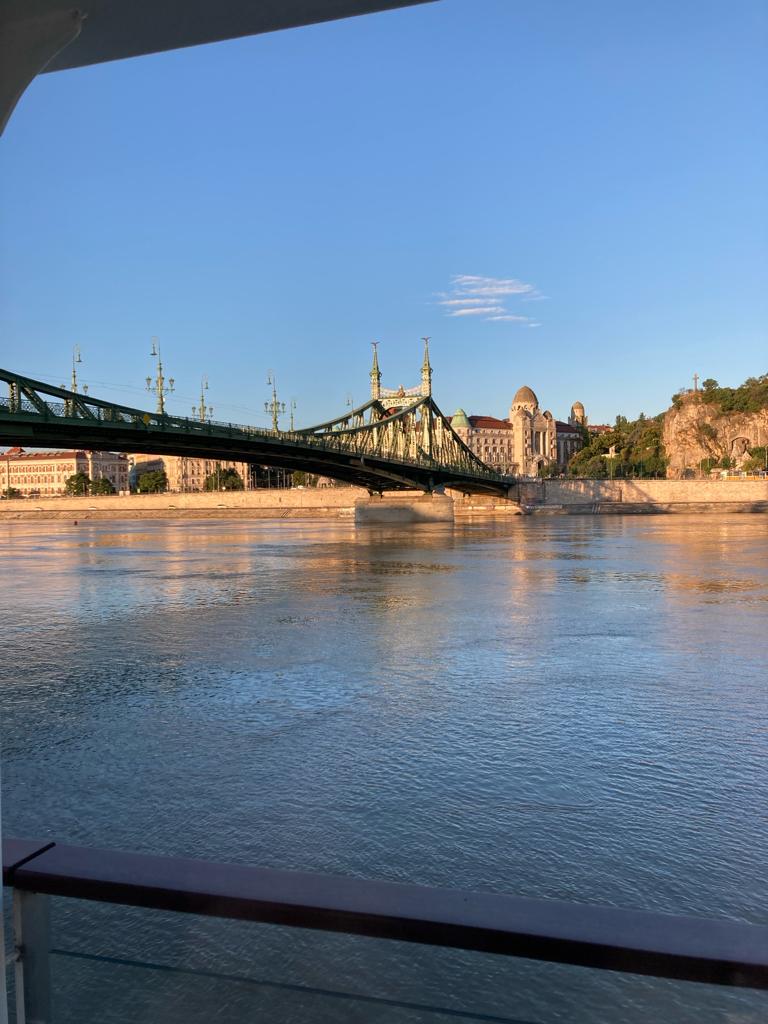
Functionally, the Liberty Bridge plays a pivotal role in the city’s infrastructure, serving as a vital conduit between the historic districts of Buda and Pest. This architectural marvel bridges not only the physical expanse of the Danube River but also the cultural and historical divide that characterizes these two halves of Budapest. In doing so, it embodies the unifying spirit that courses through the veins of this vibrant city. Moreover, the Liberty Bridge stands as a testament to Budapest’s enduring resilience in the face of adversity. Throughout its existence, it has weathered challenges and borne witness to the ebb and flow of history, emerging as a steadfast sentinel of the city’s indomitable spirit.
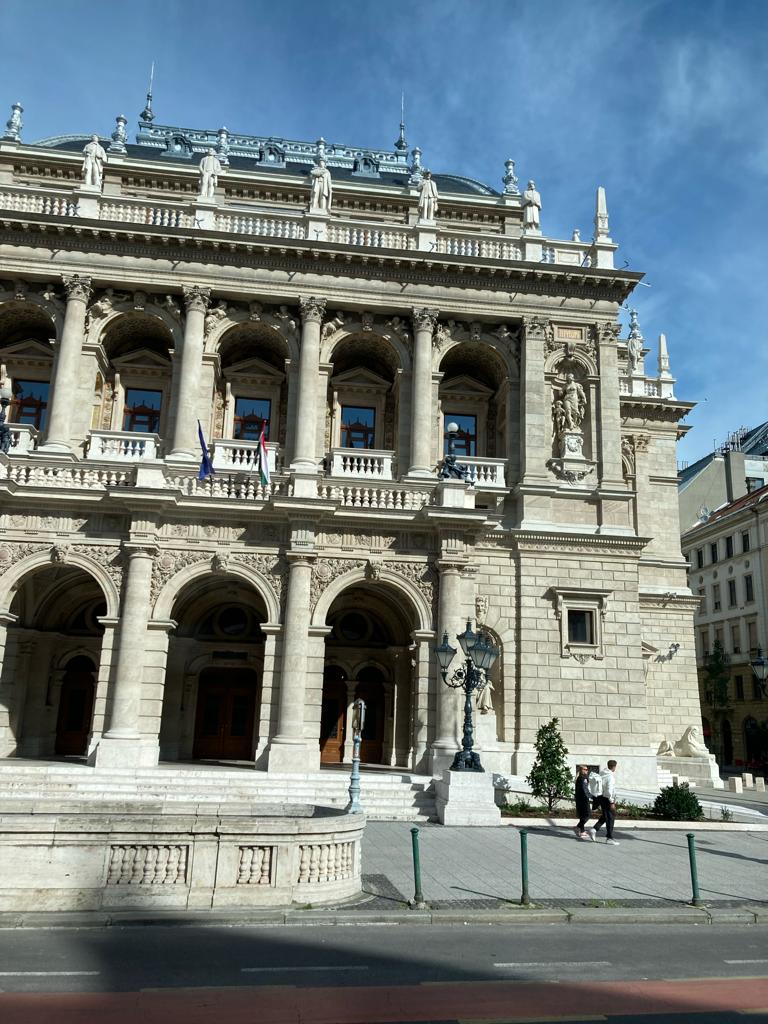
The Hungarian State Opera House, known as Magyar Állami Operaház in Hungarian, stands as a crowning jewel of Budapest’s cultural legacy. Its construction, undertaken between 1875 and 1884, was masterminded by the eminent architect Miklós Ybl. This neo-Renaissance marvel is a living testament to the zenith of Hungarian cultural prowess, representing an era often referred to as the Golden Age.
Stepping into the hallowed halls of the Opera House is akin to immersing oneself in a bygone era of artistic opulence and grandeur. The interiors are a testament to meticulous craftsmanship, where frescoes and gilded ornamentation adorn every surface, creating an ambiance of unbridled splendor. The effect is nothing short of transporting, enveloping patrons in an environment that is both aesthetically exquisite and acoustically exceptional. Functionally, the Hungarian State Opera House stands as a revered hub for opera and ballet enthusiasts, offering an unrivaled platform for the performing arts. Its stage has borne witness to countless renditions of timeless classics, and its hallowed halls have reverberated with the strains of world-class performances. More than a venue, it is a sanctuary for the arts, where the very essence of human expression finds its fullest realization.Beyond its functional significance, the Opera House holds a deeper cultural meaning for Budapest. It stands as a tangible embodiment of the city’s unwavering dedication to nurturing and celebrating artistic endeavors.
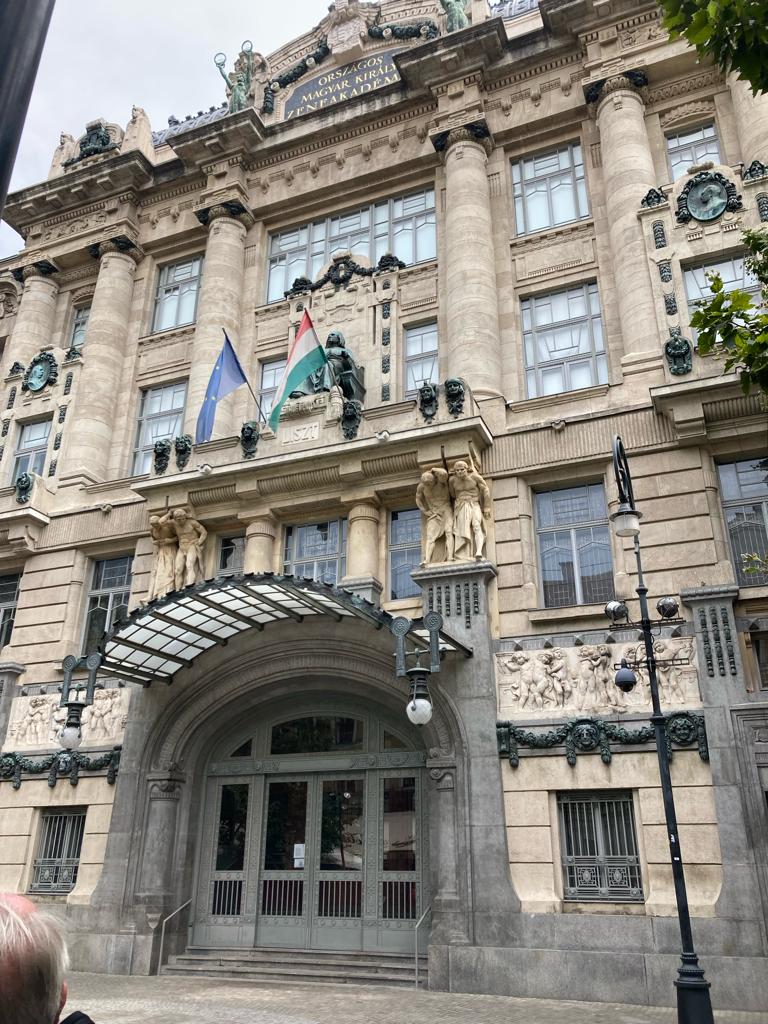
The Franz Liszt Academy of Music, or Ferenc Liszt Zeneművészeti Egyetem in Hungarian, stands as a hallowed institution at the heart of Budapest’s cultural tapestry. Erected between the years 1904 and 1907, the academy’s architectural vision was realized through the collaborative efforts of Flóris Korb and Kálmán Giergl. Named in honor of the illustrious composer Franz Liszt, the academy’s legacy transcends its mere physical structure. Within its Art Nouveau façade and meticulously curated interiors lies a haven for aspiring musicians and ardent music enthusiasts alike. The environment nurtures a profound connection between learning, creativity, and a profound appreciation for the art form. The academy’s architectural design serves not only as a backdrop but as a muse, inspiring generations of musical talent to reach new heights of artistry.
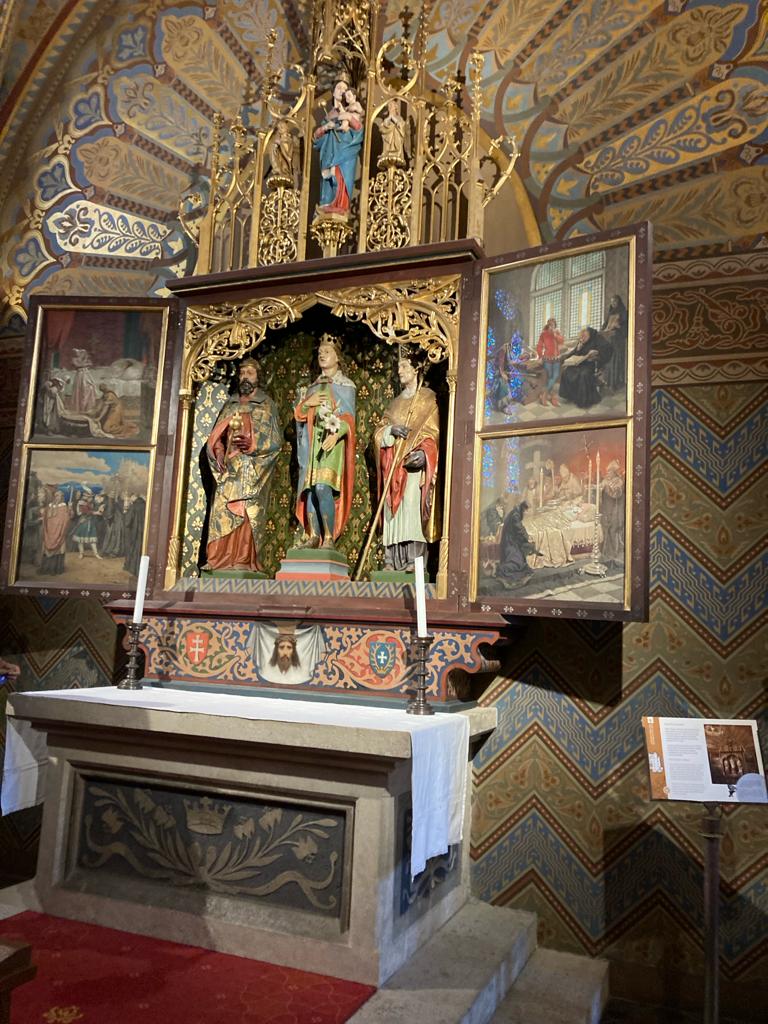
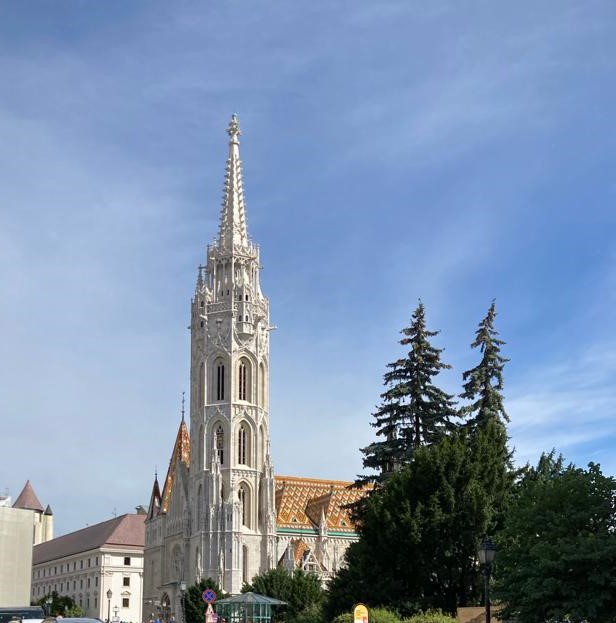
Matthias Church (Mátyás-templom). Originally built in the 14th century and later meticulously reconstructed in the 19th century under the visionary guidance of architect Frigyes Schulek, Matthias Church stands as a towering testament to Hungary’s unwavering faith and architectural prowess. This gothic masterpiece, nestled in the heart of Buda’s Castle District, is a living chronicle of the nation’s spiritual heritage.
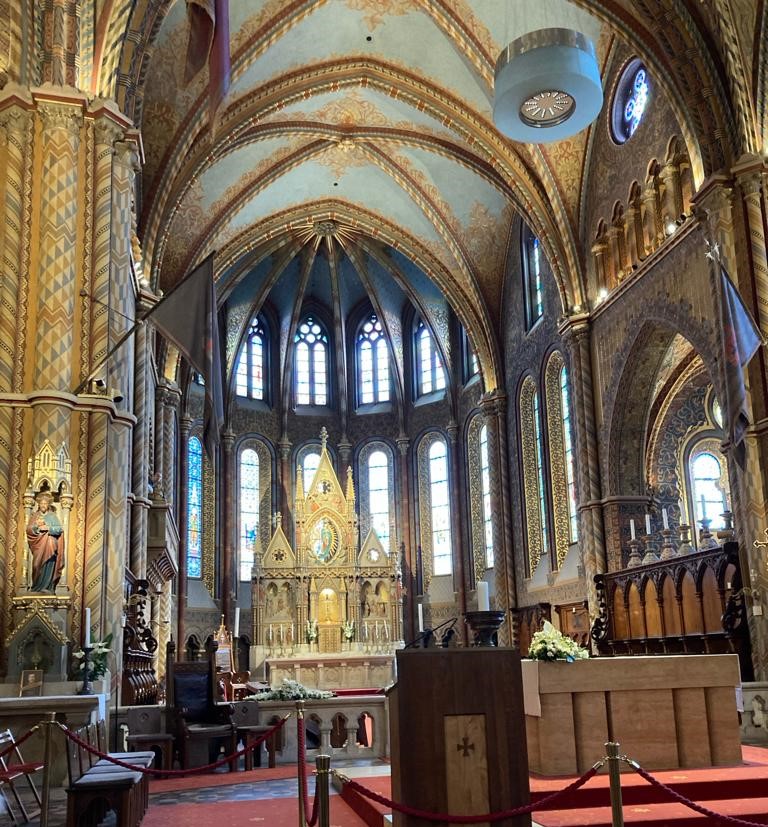
The reconstruction of Matthias Church was a labor of love, spanning decades as artisans and craftsmen painstakingly revived its grandeur. Frigyes Schulek’s keen eye for detail and historical accuracy ensured that the church emerged not as a mere recreation, but as a faithful resurrection of its former glory. The result is a harmonious fusion of medieval splendor and 19th-century restoration artistry. Stepping through its hallowed thresholds, visitors are greeted by an interior that exudes a sense of divine reverence. The interplay of light and shadow dances across the intricate stone carvings and awe-inspiring frescoes that adorn the walls. The nave, with its soaring arches and graceful columns, beckons with an air of timeless majesty. The elaborate altarpiece and sacred relics housed within the church’s confines further accentuate its sanctified aura. The exterior of Matthias Church is equally captivating, featuring the distinctive diamond-patterned roof tiles that have become an iconic symbol of the city. These vibrant tiles, juxtaposed against the dark stone façade, create a visual symphony that draws the gaze of admirers from near and far.
The construction of St. Stephen’s Basilica, or Szent István-bazilika in Hungarian, unfolded over more than five decades, commencing in 1851 and culminating in 1905. This grand neo-Classical edifice was conceived under the visionary guidance of architect József Hild, whose initial design laid the foundation for its magnificence. It was later brought to fruition by the skilled hands of Miklós Ybl, who executed the completion of this awe-inspiring marvel. Named in honor of Hungary’s inaugural king, St. Stephen’s Basilica commands the city skyline with its grandeur and elegance. Its most arresting feature is undoubtedly the dome, which soars heavenward, bestowing a sense of both spiritual transcendence and architectural splendor. The meticulous craftsmanship displayed throughout the basilica’s interior further underscores its status as a true masterpiece. One cannot help but be captivated by the altar, painstakingly crafted from exquisite Carrara marble, which serves as the spiritual focal point of the sanctuary.
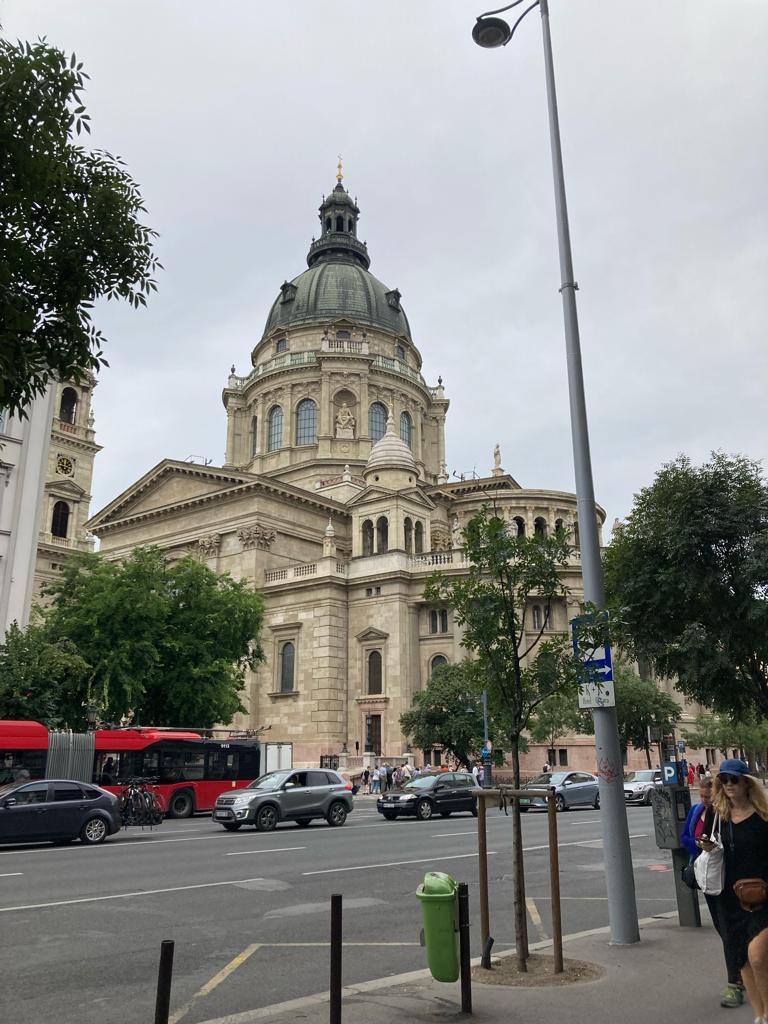
Beyond its architectural magnificence, St. Stephen’s Basilica holds profound religious and cultural significance for the Hungarian people. It stands as a testament to the nation’s enduring devotion to its patron saint, King Stephen, who played a pivotal role in Hungary’s Christianization. The basilica serves not only as a place of worship but as a living repository of the country’s religious heritage, inviting both faithful pilgrims and admirers of architectural excellence to bask in its sacred aura. As the dominant architectural presence in the city, St. Stephen’s Basilica is a tangible manifestation of Budapest’s commitment to both religious devotion and architectural grandeur. Its towering presence and meticulous detailing are a fitting tribute to Hungary’s spiritual legacy, reminding all who encounter it of the profound connection between faith, culture, and the enduring pursuit of excellence.
Budapest, a city of historical significance and architectural splendor, invites visitors to embark on a journey through time. From the grandeur of the Liberty Bridge to the cultural treasures within the Hungarian State Opera House and the Franz Liszt Academy of Music, each landmark is a testament to Budapest’s enduring legacy. The Matthias Church and St. Stephen’s Basilica, with their spiritual significance and architectural grandeur, offer further glimpses into the city’s rich cultural tapestry. Budapest is a living testament to the indomitable spirit of Hungary and a treasure trove for those seeking to explore its history, culture, and architectural marvels.






